TEAM BUILDING IN HUE
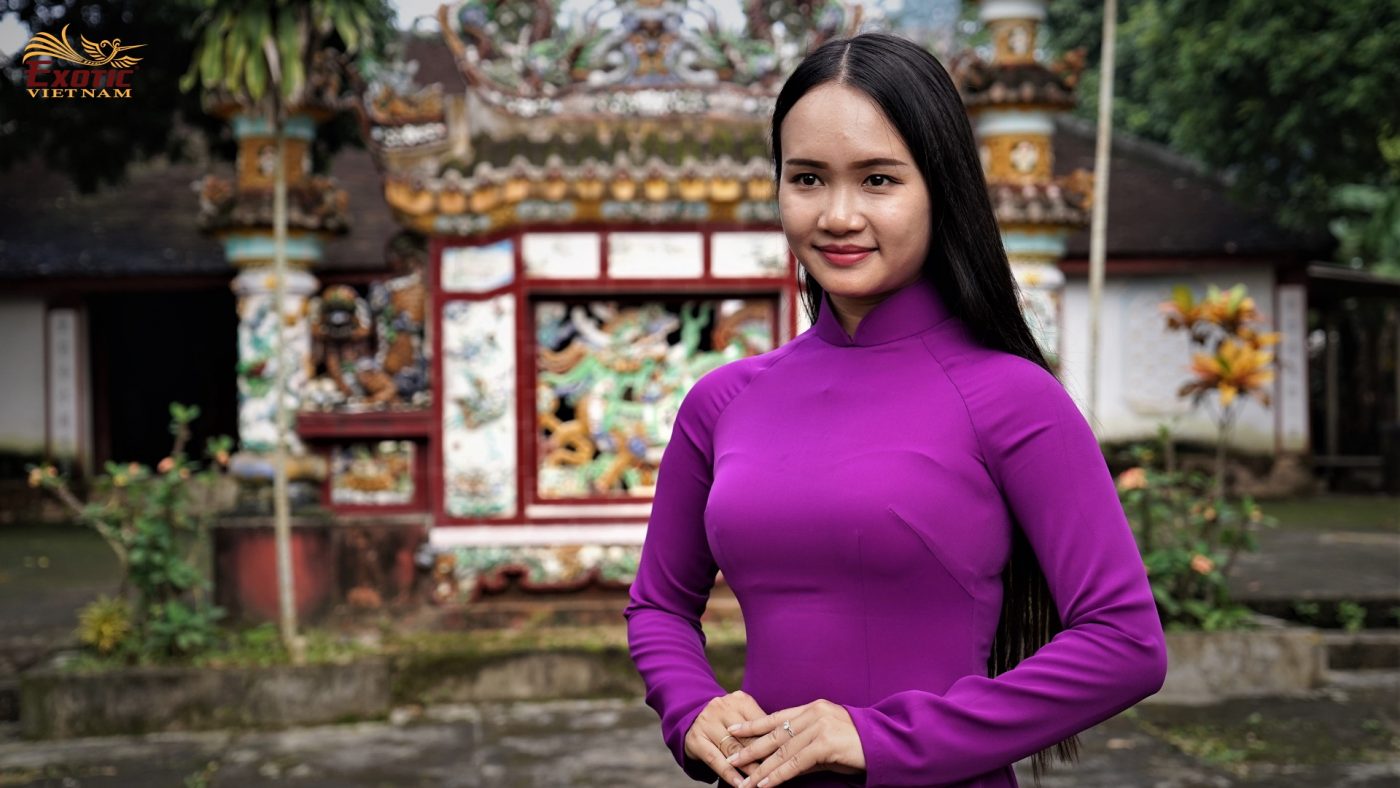
Location: 660km from Ha Noi (1 hour by plane or 12 hours by train), 1,100km from HCMC (1½ hours by plane or 20 hours by train), 105km north of Da Nang (3 hours by car).
Introduction: Being Viet Nam’s feudal capital from 1802 to 1945 under the Nguyen dynasty, Hue is widely known for the magnificent architecture of its citadels, palaces, royal tombs, pagodas and temples set in a poetic background of greenery on the banks of the Perfume River. All were laid out in harmony with nature and in accordance with the principles of geomancy (feng shui). Besides monuments, Hue still retains much of its past glory in daily routines and activities in religion, gastronomy, handicraft, music, the performing arts and traditional festivals. With those vestiges and cultural treasures, Hue became Viet Nam’s first World Cultural Heritage site recognized by UNESCO in 1993.
Highlights: Bach Ma National Park, Dong Ba Market, Thien Mu Pagoda, Garden houses, Royal citadel, Museum of Royal Relics, Perfume River, Royal tombs (King Tu Duc’s, King Khai Dinh’s, King Minh Mang’s, King Gia Long’s).
Facilities & services: boat ride on the Perfume River, cultural shows, international standard hotels and restaurants.
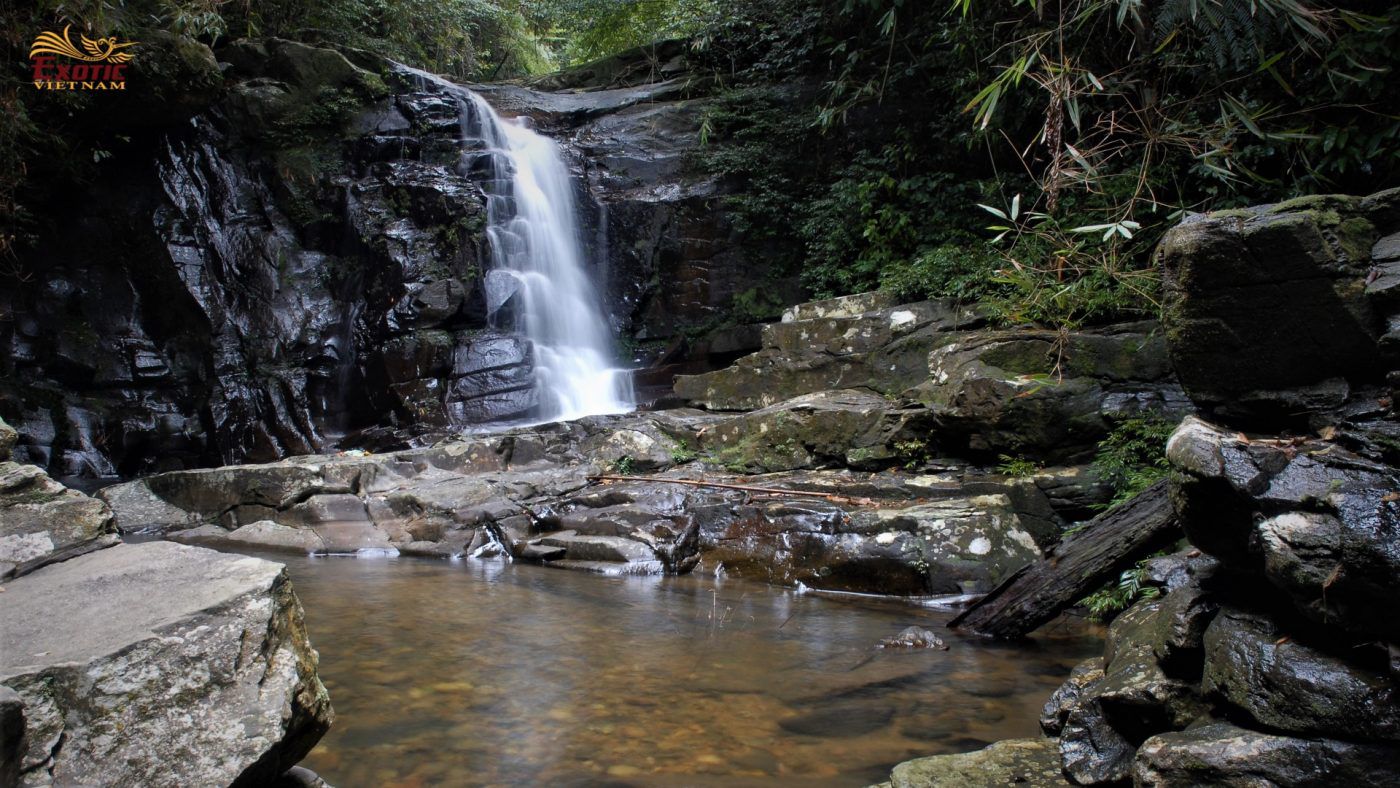
Bach Ma National Park
Just 45km south of Hue, Bach Ma National Park, is home to old French hill station on Mt. Bach Ma which rises 1,450m. In 1932, this summit was discovered by the French engineer, M. Girard to become a hill station with 139 villas and hotels. During the war, Bach Ma was soon forgotten and the villas abandoned. In 1986 the area was established as a national park. Covering an area of 37,487 hectares, Bach Ma still retains quite a good amount of immense primeval forest with diverse flora (2,147 species) and fauna (more than 1,500 species), in which 93 species are listed on the Red Book of Viet Nam. Waterfalls, crumbling villas, hiking trails, and a wealth of wildlife, including pheasants, langur monkeys, and muntjac deer, make a magnetic spot to spend a day or longer. Visitors can find exciting trekking routes and romantic guest housed in this park. The best time to visit Bach Ma National Park is from April to September, which is the dry season. You should avoid visiting during October to January, because of the rainy and flood season.

Dong Ba Market
Located on the southeastern corner of Hue Citadel, Dong Ba Market has been one of the most famous commercial centers in Viet Nam for more than 100 years. Built in 1899 and then destroyed in 1968, the market was rebuilt on an area of 5ha in 1986. Up to now, all the typical features of a traditional Vietnamese market are still there such as the sampan landing, the bus station and the bazaars. Dong Ba market is a paradise for snapshots of daily activities as well as for shopping with everything from souvenir items to bronze goods, Hue sesame sweetmeat, conical poem hats, etc.
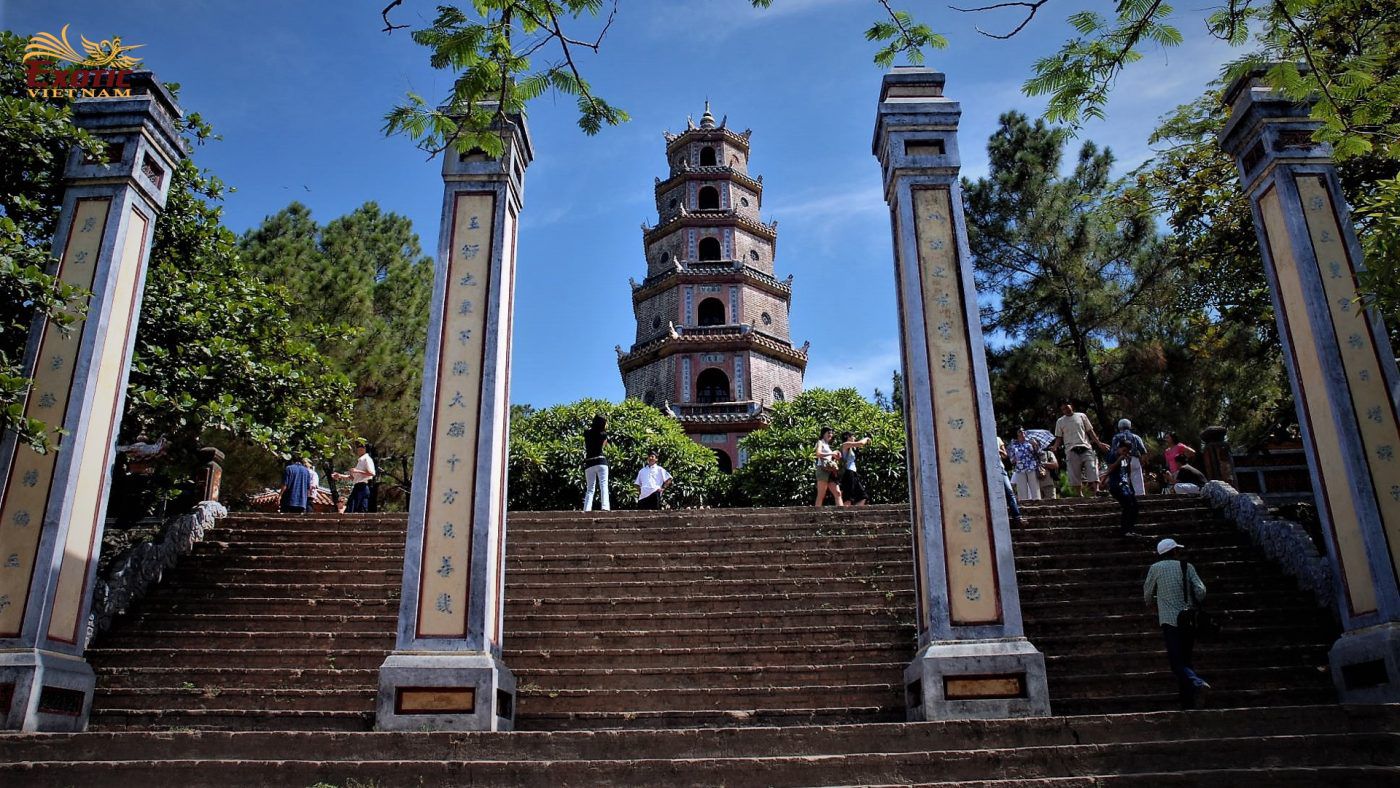
Thien Mu Pagoda
Thien Mu Pagoda, also known as Linh Mu Pagoda, was originally founded in 1601 by Lord Nguyen Hoang. This pagoda, built on a hillock overlooking the Perfume River, is one of the most famous architectural structures in Viet Nam. The most striking feature of the pagoda is the 21m-high octagonal tower, the 7-storeyed Phuoc Duyen Tower. The tower was built by King Thieu Tri in 1844 and has become the unofficial symbol of Hue. Lying on Ha Khe Hill, 7km from Hue, the pagoda can be reached either by car or by boat. Visitors often come here late in the afternoon in order to enjoy sunset on the Perfume River and to attend the daily prayer service at 5 pm.
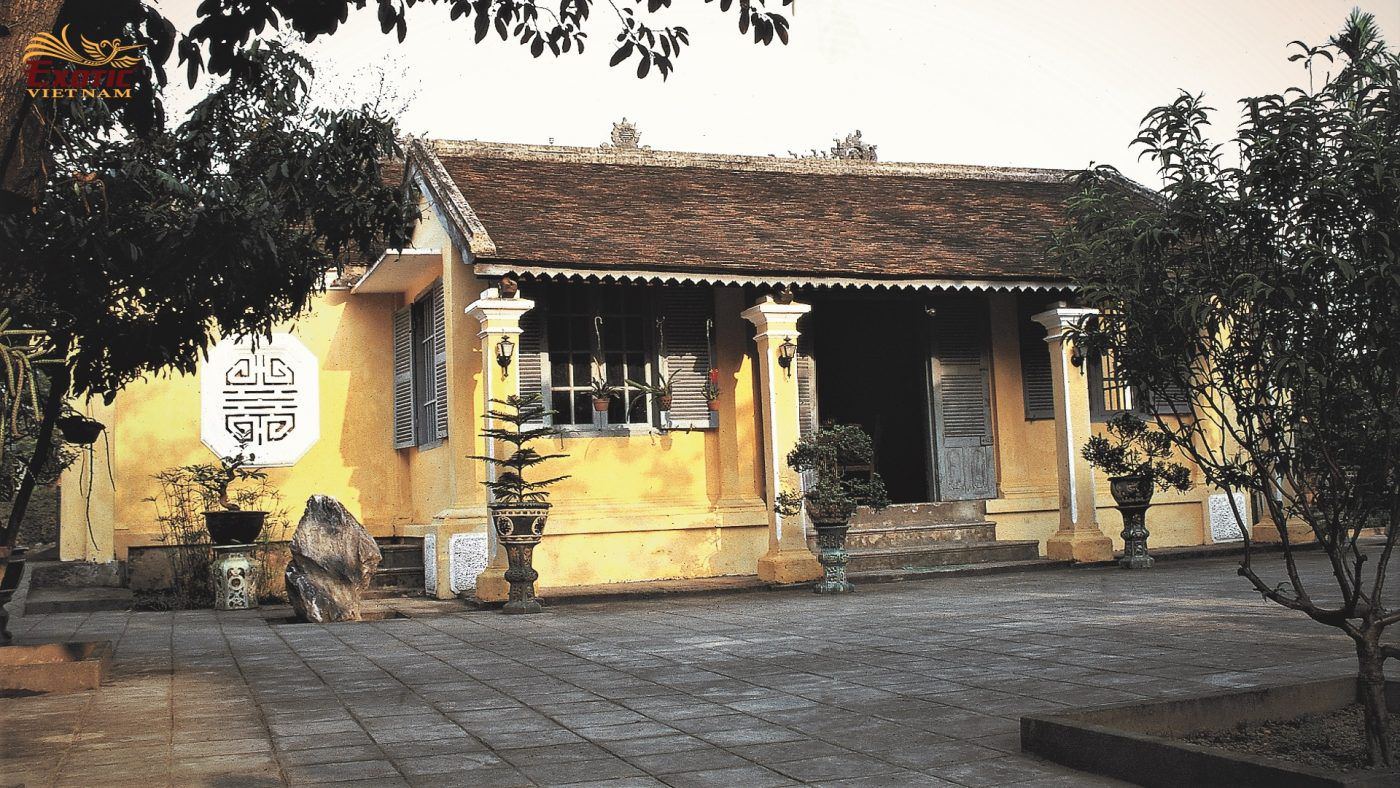
Garden houses
Hue owes its beauty not only to the Perfume River, Mount Ngu Binh and royal mausoleums but also to garden houses. This kind of house is a prominent feature of Hue. Each garden house has an area of about 2,000m2. In front of the house, there is always a tile-covered gate. Around the house is a garden with all kinds of fruit and flowers. The highlight in a garden house is a small rock-garden which is an artificial wood and mountain made of rock, water and plants. The house and the garden, the people and the landscape, etc. all blend harmoniously in a colorful atmosphere. All shows the love of nature of the owners, which is one of Hue people’s characteristics. Visitors can visit some garden houses such as Lac Tinh Vien (65 Phan Dinh Phung St.), Princess Ngoc Son (29 Nguyen Chi Thanh St.), Y Thao (3 Thach Han), etc.
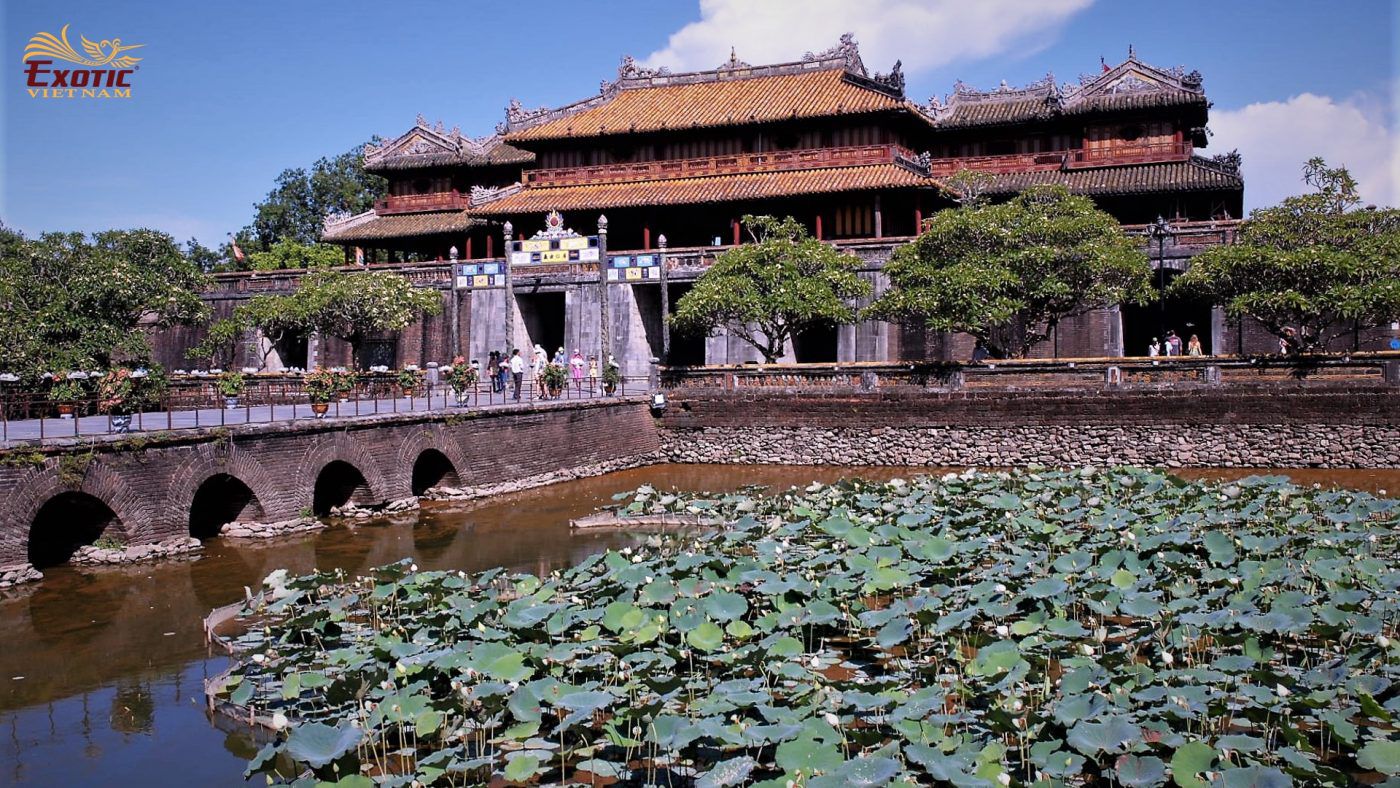
Royal citadel
The construction of the moated citadel, which has a 9,950m-long perimeter, was begun in 1805 on the northern bank of the Perfume River by King Gia Long. The citadel was originally made of earth, but between 1818 and 1832 it was paved with a 2m-thick layer of bricks in the style of the French architect Vauban. The king’s official functions were carried out in the Royal Enclosure, a citadel-within-a-citadel with a perimeter of 2,450m. The Royal Enclosure has 4 gates, the most famous of which is Ngo Mon Gate (or Southern Gate) used as the main entrance. Within the Royal Enclosure is the Forbidden Purple City, which used to be the living quarters of the king. With more than 100 buildings such palaces, temples, fortresses, etc., the Citadel is the most interesting place to visit in Hue.
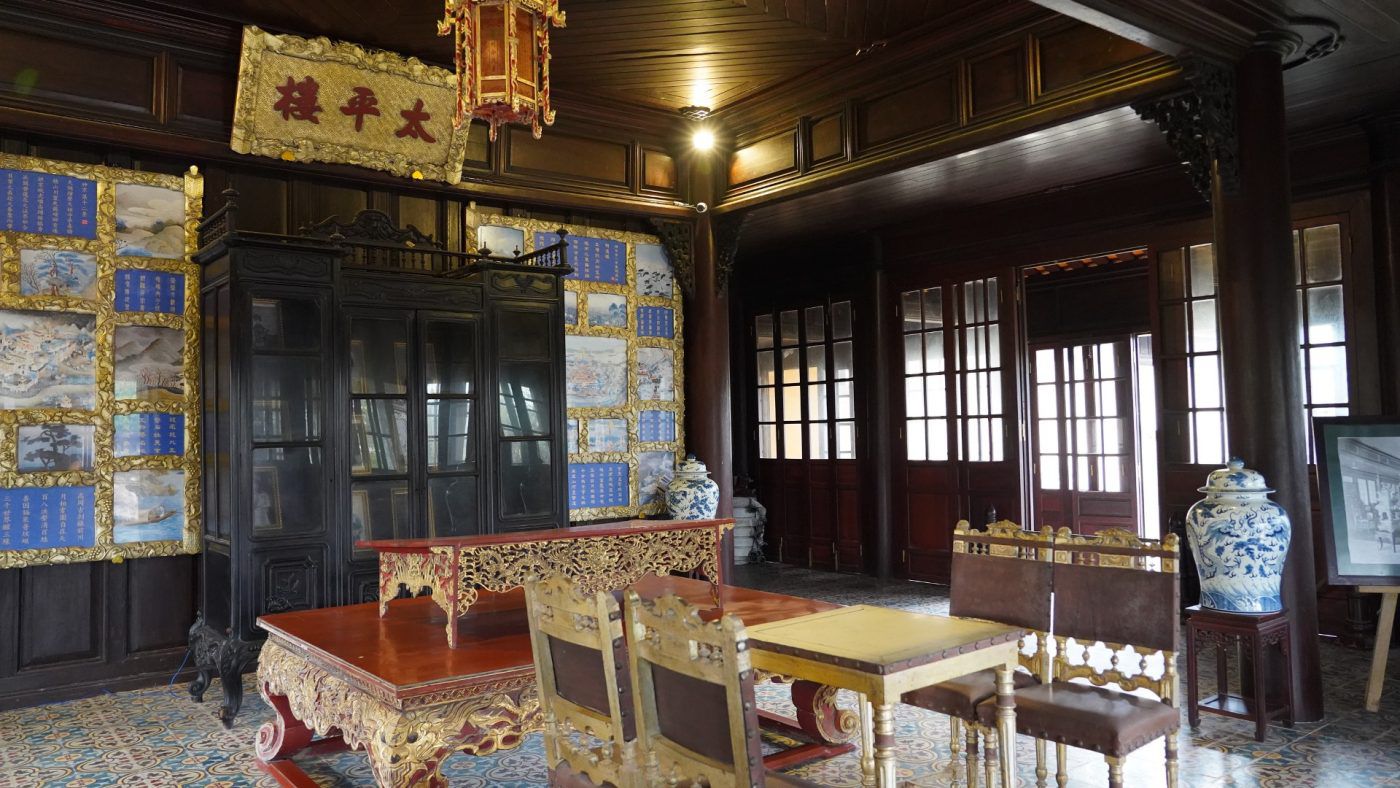
Museum of Royal Relics
The beautiful hall that houses the Museum of Royal Relics was built in 1845 and restored when the museum was founded in 1923. This is a precious wooden construction of Hue’s unique palace architectonics. The house was built after “trung thiem diep oc” model (sloping successive roofs) with 128 pillars. The first sight catching visitors’ eyes is the walls inscribed with 1,000 poems written in chu nom – Vietnamese script. Most of the exhibits displayed here bear characteristics left by the last Vietnamese feudal dynasty. Here visitors can find the everyday utensils (such as clothing, sedans, gongs, etc.) of the King and the royal family and other aesthetics decorative works in the palaces of Hue.
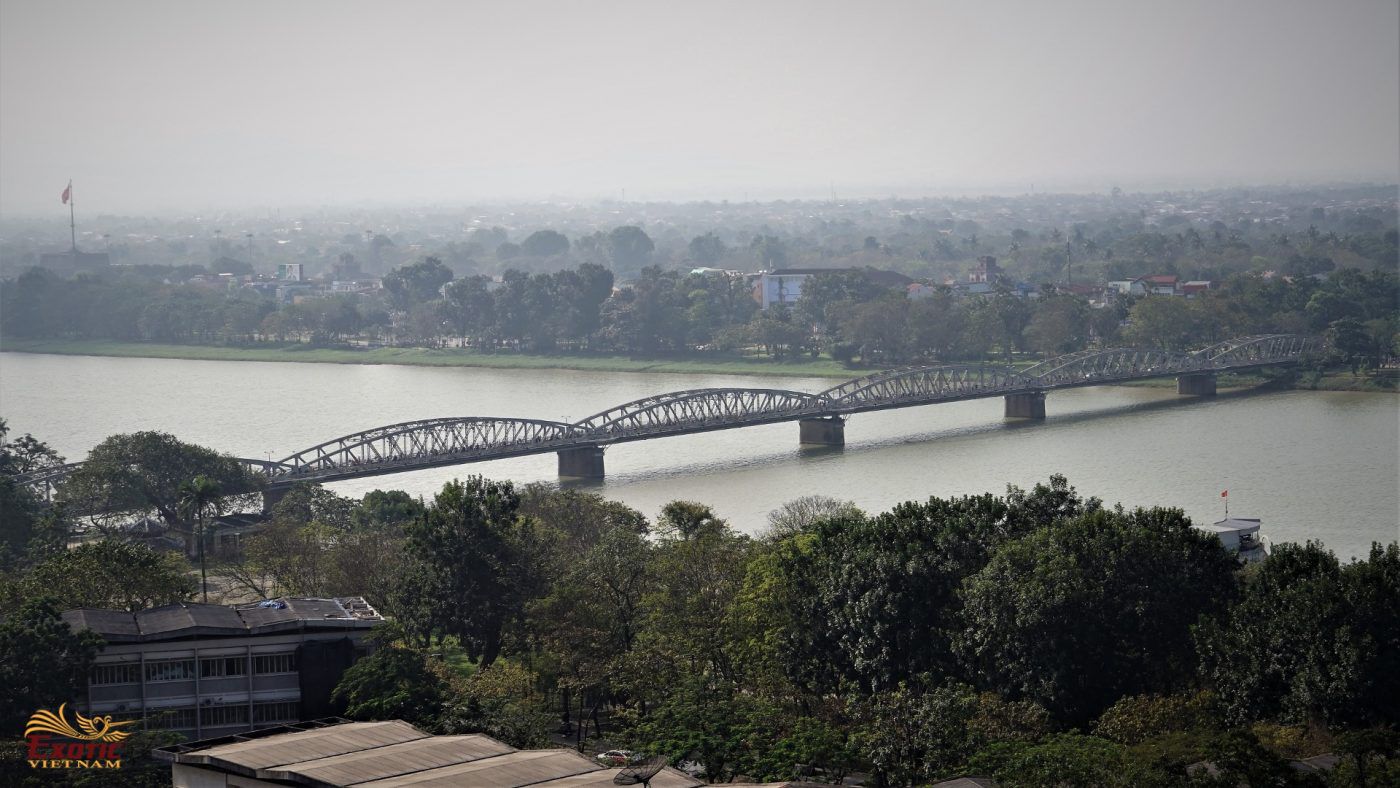
Perfume River
A visit to Hue would be not complete without a boat excursion on the Perfume River (Song Huong). This 100km-long river owes its name to the fact that it flows through many forests of aromatic plants before reaching Hue, bringing with it fragrances of tropical flora. A boat cruise will offer visitors a general view of the daily life of Hue people. When night falls, the surface of the river glistens under the moonlight and the folk melodies of Hue make the lovely river even more poetic and musical. It is said that Hue is peaceful and tranquil mostly thanks to the Perfume River.
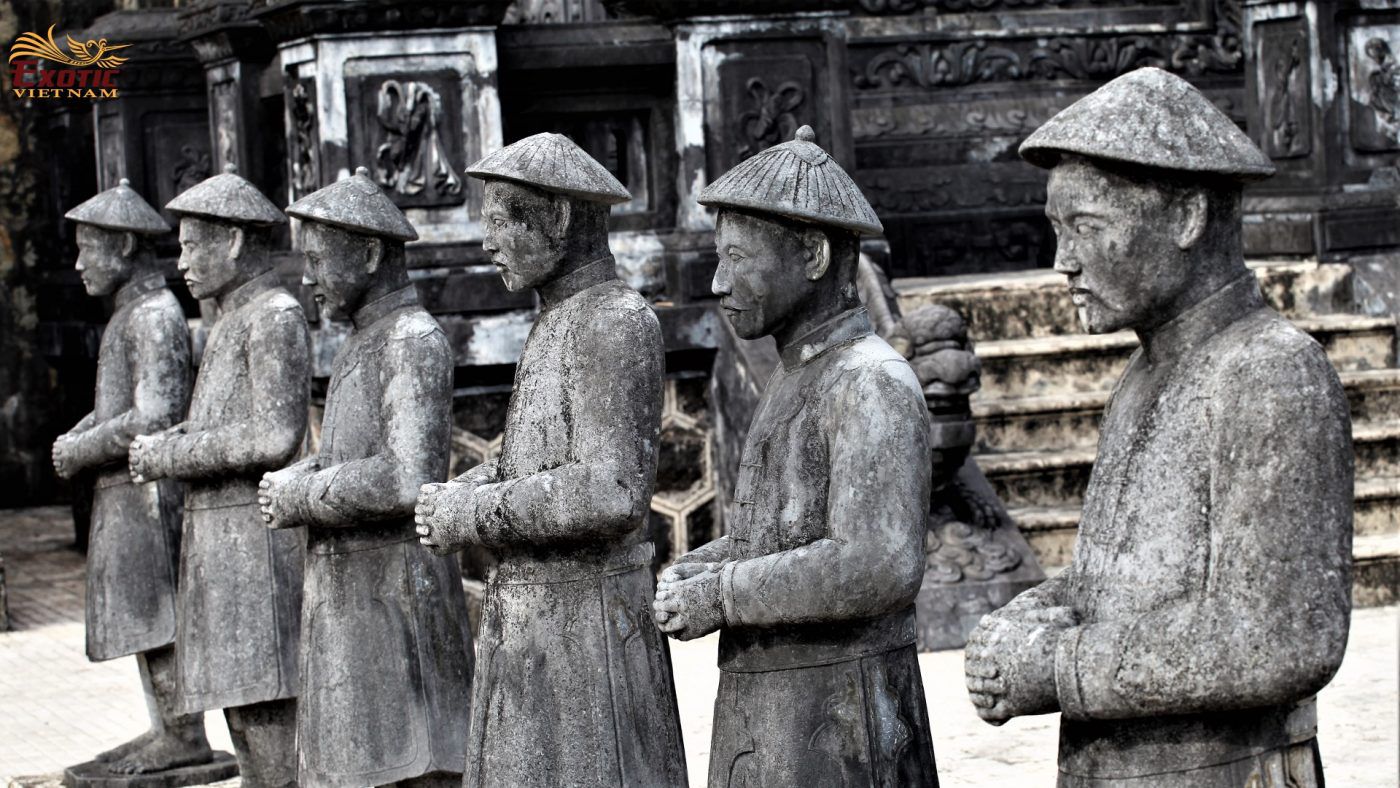
Royal tombs
There are eight royal tombs in Hue that are the final resting places of the Nguyen kings. Among them, Tu Duc’s Tomb, Khai Dinh’s Tomb, Thieu tri’s Tomb, Minh Mang’s Tomb, Gia Long’s Tomb are often visited. The construction of each tomb was very meticulous and usually started while the reigning king was still alive. Most of the tombs face the south-west, the direction of the Royal City. Although all are unique in structure and design, most of the tombs consist of two compounds. The first is reserved for funeral services and the second is the tomb proper. Generally, each tomb is enclosed by a surrounding rampart. However, the internal configuration of each tomb is different, since these particular arrangements reflected the tastes and personality of the monarch.
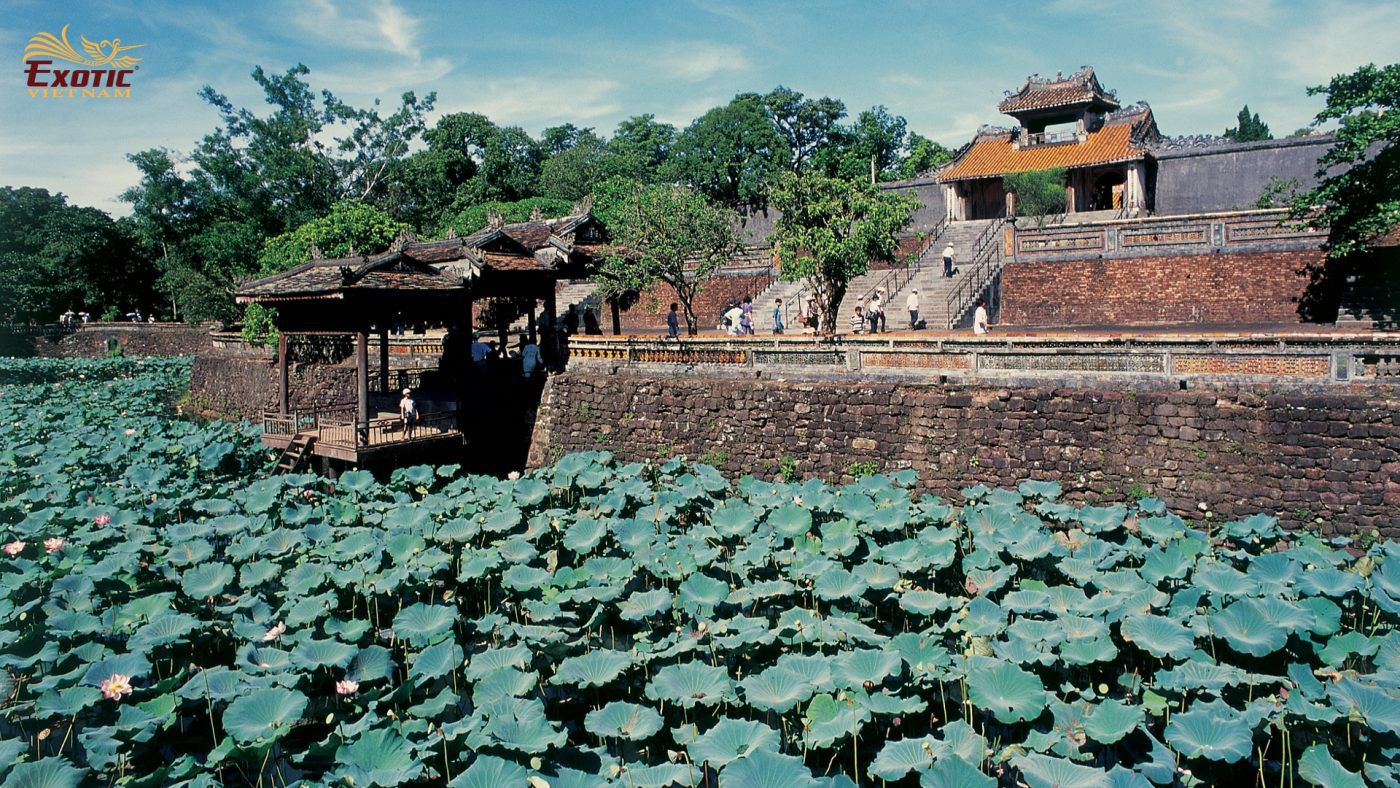
King Tu Duc’s Tomb
7km far from Hue city, King Tu Duc’s Tomb (Khiêm Lăng) is surrounded by a brick wall. Tu Duc was the fourth king of Nguyen Dynasty. He had his tomb constructed in 1848 when he was still on the throne. The tomb was built according to the plan based on two axes: one for the mausoleum and another for the palace. The tomb comprises of an important number of buildings, man-made ponds full of nenuphars and lotuses, crossed by various bridges and covered by frangipanniers. This is one of the most romantic and splendid masterpieces.
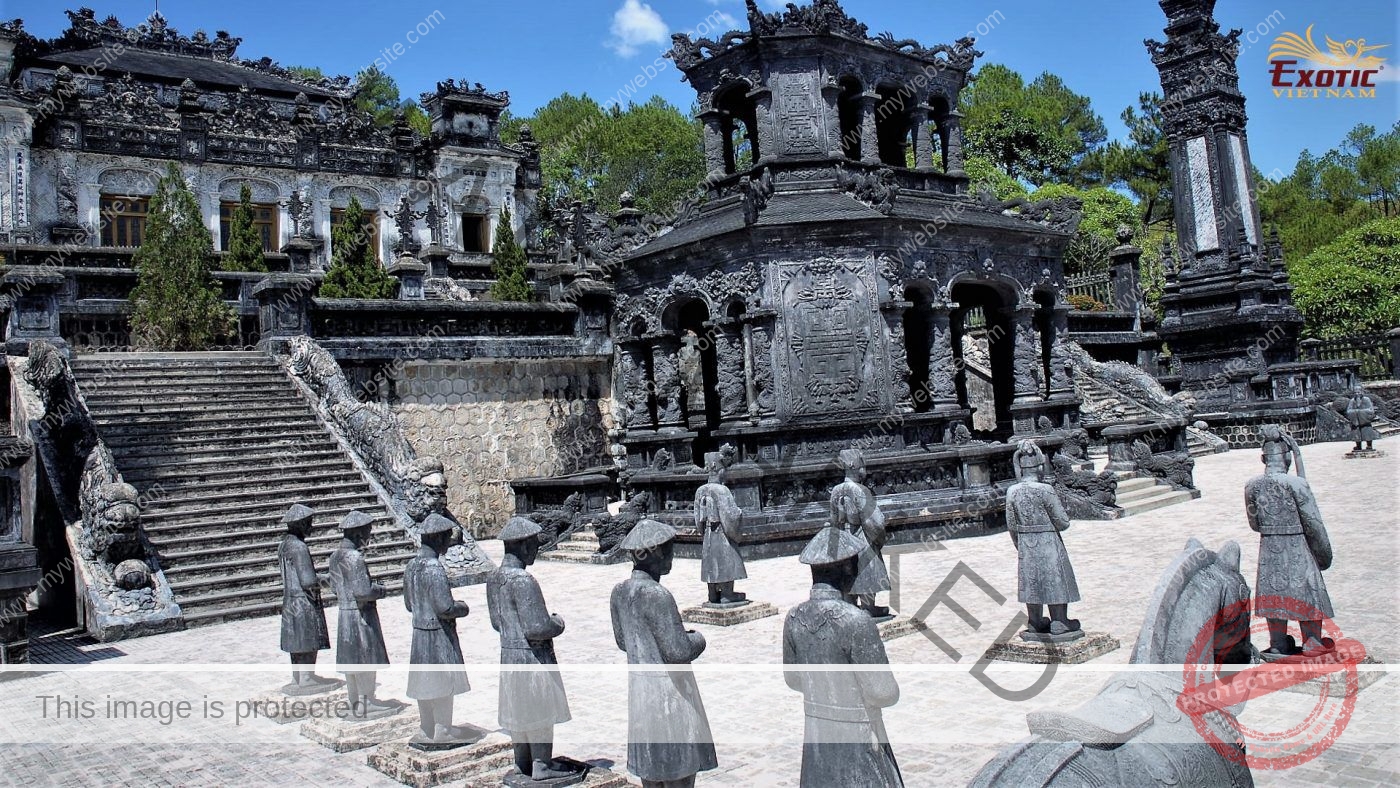
King Khai Dinh’s Tomb
10km far from Hue city, Khai Dinh is the twelfth king of Nguyen Dynasty and he is also the father of King Bao Dai, the last king of Viet Nam. The construction of the tomb (Ưng Lăng) started from 1920 to 1931. The conception of its architecture and decoration got the European influence. The multi-colored ceramic inlaid style makes his mausoleum gracious and magnificent.
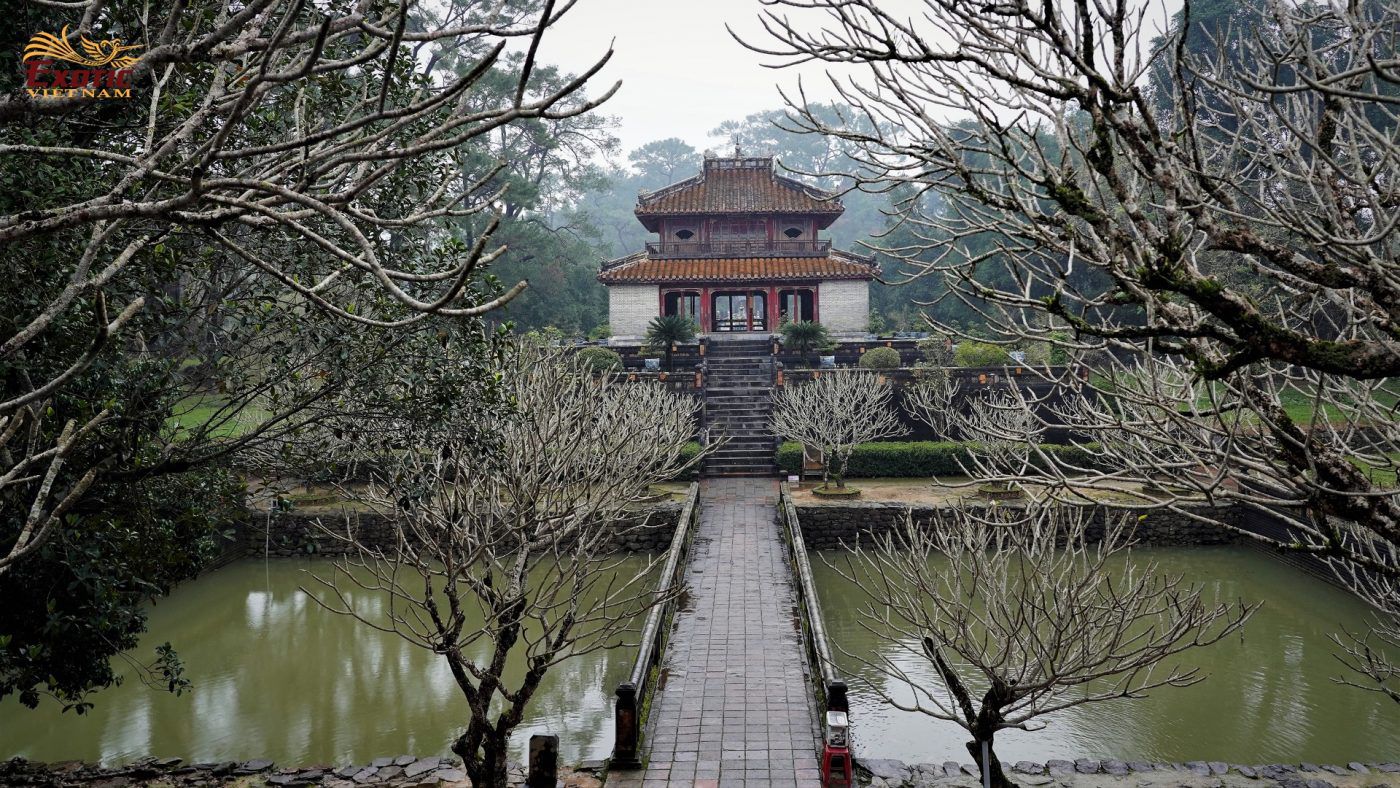
King Minh Mang’s Tomb
12km far from Hue city, King Ming Mang’s Tomb (Hiếu Lăng) is located on the left branch of the Perfume river. The tomb was built as the plan drawn out by the king himself and the middle of the pine forest. The construction started in 1841 after the king’s death. The palace, the pavilions and the entrances are harmoniously built around two big lakes that make these more luxurious and peaceful.
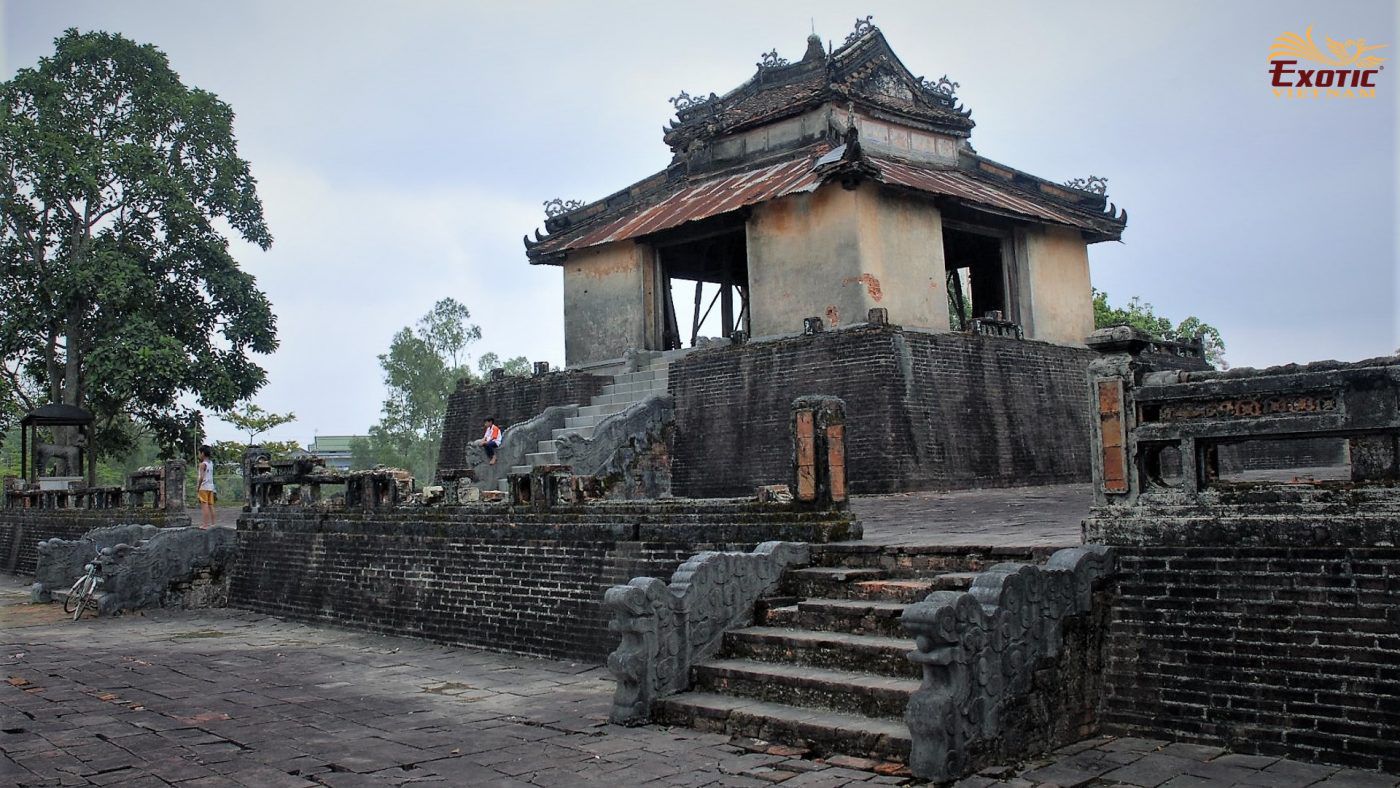
King Thieu Tri’s Tomb
8km far from Hue city, King Thieu Tri’s Tomb (Xương Lăng) was built in early 1848 and completed in only 10 months to promptly bury the king’s body. Surrounded by rice fields and gardens as a natural guard line that makes the peaceful and tranquil atmosphere of the architecture. Its structure is the combination of the two previous tombs’ architectures (Gia Long’s & Minh Mang’s tombs) with two axes including tomb axis on the right and worshiping axis on the left standing 100 meter away from each other.

King Gia Long’s Tomb
16km far from Hue city, King Gia Long’s Tomb (Thiên Thọ Lăng) is a complex of several royal tombs including the tomb of his mother, the tomb of himself and his wives, and tombs of other royal family’s members, mainly built in 6 year, from 1814 to 1820. This tomb is the resting place of the first king of the Nguyen Dynasty. Among the Nguyen emperors’ tombs, this is the largest tomb area with about 28 km2, which is rated as “a magnificent picture of the coordination between nature and architecture”.
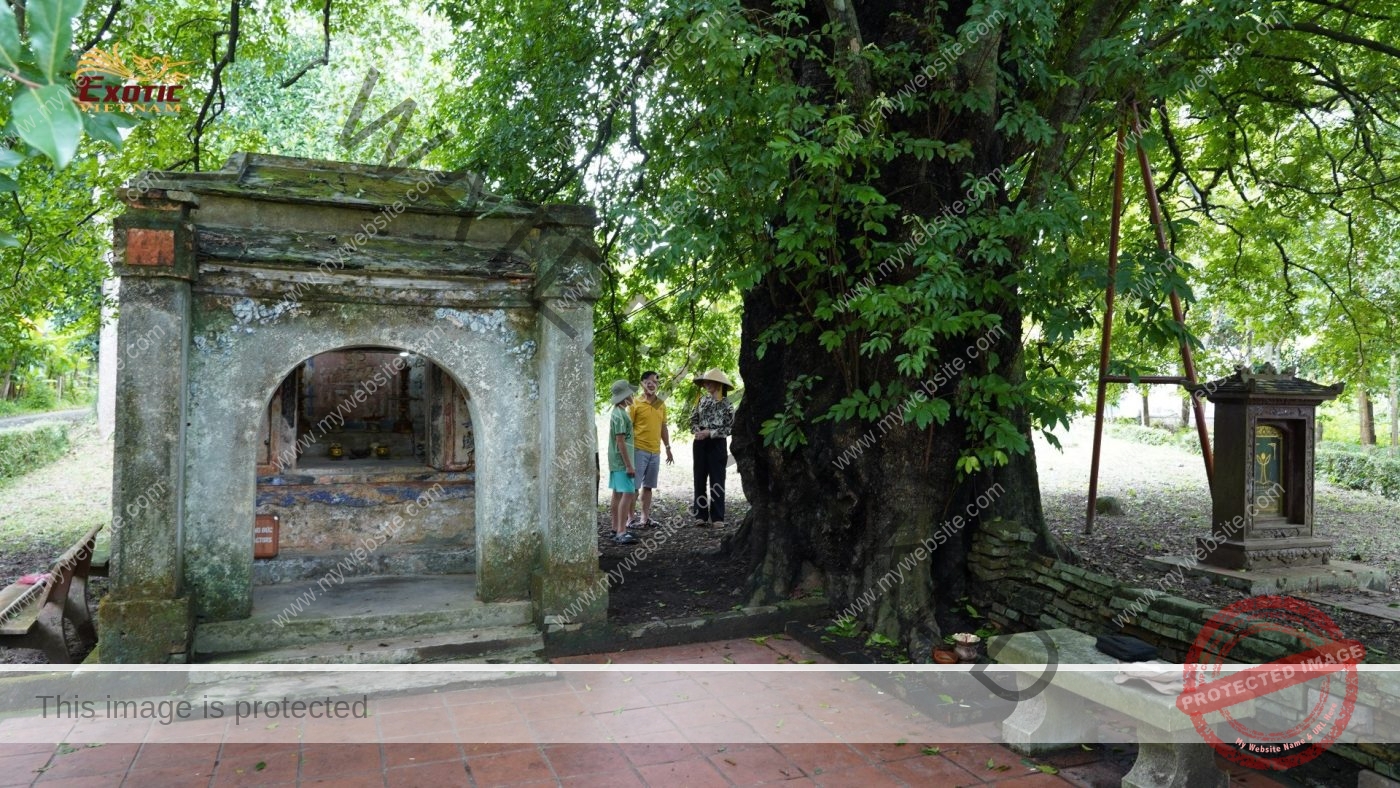
Phuoc Tich Ancient Village
40km north of Hue, Phuoc Tich has a special location attached to the O Lau River, where the river forms a nearly circular bend, surrounding an oasis with a diameter of about 500m, before pouring water into Tam Giang lagoon. Established in 1479, Phuoc Tich ancient village still preserves many valuable tangible heritages, including: 13 religious relics; 28 ancestral houses. Among the 117 houses of residents, there are 26 ancient houses, and 12 houses have special architectural and artistic value. In the wooden house’s campus, there are almost no additional main structures made of brick or concrete. In addition, many traditional occupations are still preserved, such as growing lotus & making lotus tea, making pottery, etc. In 2009, Phuoc Tich ancient village was the second village to be recognized as a national heritage of Viet Nam.
Team building in Phuoc Tich, Hue with Exotic Vietnam is an opportunity to help you discover and experience a peaceful life in a quiet countryside, and get insight into close, friendly residents by team building challenges simulated from traditional values.
